
(12.06.05) WITH the hectic release schedule Sublight Records had since last year, there’s a high chance you have come across some of the music published by this Canadian label, covering a spectrum that goes from the harsh breakcore of Venetian Snares and Synkro to the warm electronica of The Flashbulb and The Gasman. We took advantage of a brief pause between two releases and asked Aaron Rintoul, owner of Sublight Records, the mechanics behind running such a prolific label.
I think there’s a question that many people would like to ask and that is, how does a label manage to release so many records and artists, starting from zero? We all know the issues of managing a small electronic label, Merck shutting down these days speaks for itself. Aaron replies, “So far I have released 13 CD’s on Sublight since February 2004 starting with Red Extensions of Me by The Flashbulb and Horse and Goat by Venetian Snares and that number will go up to 22 CD’s by March 2006. The startup cost for Sublight was about $3000 and each release that came out had to pay for the next album I wanted to manufacture so it was always about surviving until the next release and being really careful with spending. I didn’t go crazy making t-shirts and stickers –I put the focus on releasing strong albums by good artists. Managing a label in this genre is very difficult and most of the time it means not being able to pay yourself nearly enough for the amount of work and time you put into it.”
So far Sublight have released vinyl only with the help of Hymen Records. Could it be due to manufacturing costs, the art and respect of old-school support, or initial intentions as a CD label? “It’s a number of things,” responds Aaron, “…one being the cost of manufacturing vinyl due to current oil prices. Records are now double what a CD costs to produce and are still sold at the same or at lower prices than CD’s but not nearly as many people are buying vinyl. My deal with Hymen means less of a money risk for me while still getting to release certain projects on vinyl. It has made it possible to do things like the Richard Devine, Sigstop picture disk, which looks amazing and I’m really proud of but it cost a fortune to make.”
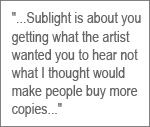
Sublight became recognized and renowned after only a few titles starting with a Venetian Snares release which certainly helped the imprint’s visibility amongst its audience. “I always thought it made more sense to invest in established artists that would help build the label’s reputation,” Aaron continues “…so I could release new talent without going broke if the sales were not great at first. I think Sublight is starting to get to that point and I have just released a really amazing new artist called Wisp for his first album Nrthndr (review below) which I am really excited about and I think he is one of the best producers making electronic music at the moment.”
Trusting their roster is a key factor for Sublight; artists are allowed the freedom to freely select which tunes and what kind of music is released for their particular title. This, in turn, brings up the question of quality control as many labels operate with an opposing approach. “Yes, that is essentially right,” explains Aaron, “it really goes against everything art is about when labels select tracks and in a lot of cases physically edit peoples music until they are happy with it. I find when I tell an artist to do whatever they want, the final album always ends up sounding a lot more progressive which I like because without progression art is boring like a lot of labels that get hung up on the new trend of the moment. I am not going to say, for example, OK guys, everyone has to make grime albums until further notice because that is really where the future is, and I’m not going to say, I want all your tracks to sound more like this because this is what we as a label think your album should be about. Sublight is about you getting what the artist wanted you to hear not what I thought would make people buy more copies.“
Another question arises with the selection of artists; Does Sublight select artists from incoming demos, do they simply ask certain artists for tracks, or do they rely on collaborators and friends’ suggestions? “Aaron Funk (Venetian Snares) is a good friend who has helped me out a lot with selecting artists and offering up new ideas for Sublight. Lynn Standafer (Enduser) put me in touch with Submerged and Bill Laswell for their Method of Defiance project, so yeah, for sure I get a lot of support by the people involved in Sublight. I also approach artists I am personally interested in and ask them if they would like to be a part of the label. I think in the past two years I have worked with almost everyone I set out to when starting Sublight in January 2004.”
For more information about Sublight, visit their website here.
::..:::…..:..::….:::::..:::..:::::::……:::…::.:::….::::..:..:::…::…….:::::
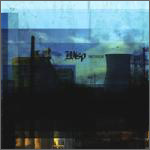 Finally, the long awaited Wisp debut album is here. After listening to several tracks and remixes floating on compilations, I was curious and excited about a solo work. Since the very beginning of Nrthndr you’ll be aware of something special: the alchemy of junglist breaks and uplifting melodic composition of “Negions Fail” works so well that you’ll be instantly mesmerized. You must surrender to Wisp’s sweet tunes, so beautifully arranged that they smoothen rhythms that otherwise would be called breakcore. “Closing Brydges” is a stunning crescendo from an eerie atmospheric piece to an analog outburst; “Congratulations” is more upbeat and digitalized while “Loophole” slows down with some technoid influence; “1Stop” is a brief trip to hip hop territories but the common feature is that they’re all moving and joyful, like no other thing you listened to in recent times. “Untethered” borrows too much inspiration from the Boards of Canada but I can forgive him listening to the acid bleep rave of “Dead Street.” The end of this record is simply amazing –before closing with the warm piano licks of “North,” it’s time for the frantic scattered breaks of “All his might” that, after an epic breakdown, literally explodes into a reece driven anthem full of bass energy and 8-bit melancholia. Nrthndr is a record made up of contrasts between intense rhythms and playful melodies that will stick in your brain for a long time, superb and unpaired stuff. Nrthndr on vinyl will be released on Hymen Records. Watch out for a forthcoming vinyl EP on Terminal Dusk as well.
Finally, the long awaited Wisp debut album is here. After listening to several tracks and remixes floating on compilations, I was curious and excited about a solo work. Since the very beginning of Nrthndr you’ll be aware of something special: the alchemy of junglist breaks and uplifting melodic composition of “Negions Fail” works so well that you’ll be instantly mesmerized. You must surrender to Wisp’s sweet tunes, so beautifully arranged that they smoothen rhythms that otherwise would be called breakcore. “Closing Brydges” is a stunning crescendo from an eerie atmospheric piece to an analog outburst; “Congratulations” is more upbeat and digitalized while “Loophole” slows down with some technoid influence; “1Stop” is a brief trip to hip hop territories but the common feature is that they’re all moving and joyful, like no other thing you listened to in recent times. “Untethered” borrows too much inspiration from the Boards of Canada but I can forgive him listening to the acid bleep rave of “Dead Street.” The end of this record is simply amazing –before closing with the warm piano licks of “North,” it’s time for the frantic scattered breaks of “All his might” that, after an epic breakdown, literally explodes into a reece driven anthem full of bass energy and 8-bit melancholia. Nrthndr is a record made up of contrasts between intense rhythms and playful melodies that will stick in your brain for a long time, superb and unpaired stuff. Nrthndr on vinyl will be released on Hymen Records. Watch out for a forthcoming vinyl EP on Terminal Dusk as well.
::..:::…..:..::….:::::..:::..:::::::……:::…::.:::….::::..:..:::…::…….:::::
 I hope you aren’t already saturated with Enduser’s music, Calling The Vultures is his third full-length in 2005, following a Venetian Snares release rate, and if I won’t dare saying this is his best record, it’s surely the most structured of all. After the mashed-up samplemania of Run War and the jungle assault of Comparing Paths, this record goes deeper into hip hop territories than its predecessor, with a first half of the tracks focused on slow and (relatively) simple breaks, with the help of MC equivalANT, already appreciated in Mad EP works, and female vocalist Rachel Kann. These tracks form an unsettling apparent calm before a predictable storm: you expect a relentless breakcore mayhem, and while waiting for the razor sharp amen breaks to come, you’re embedded in a foggy landscape, with raw and low pitched beats and spooky samples as surroundings. “Interruption (2)” marks the change of pace: starting with equivalANT’s menacing lyrics, it evolves in a pounding four-to-the-floor stomper, preparing your ears for the forthcoming noisy fury of “Wednesday.” A kind of fury that feeds itself with every tune until the end of Calling The Vultures: “Assassin” speaks for itself, it’s the type of material Enduser released on his Outbreak or Ad Noiseam 12″, with amen breaks pumped to the maximum and quaking reece bass.
I hope you aren’t already saturated with Enduser’s music, Calling The Vultures is his third full-length in 2005, following a Venetian Snares release rate, and if I won’t dare saying this is his best record, it’s surely the most structured of all. After the mashed-up samplemania of Run War and the jungle assault of Comparing Paths, this record goes deeper into hip hop territories than its predecessor, with a first half of the tracks focused on slow and (relatively) simple breaks, with the help of MC equivalANT, already appreciated in Mad EP works, and female vocalist Rachel Kann. These tracks form an unsettling apparent calm before a predictable storm: you expect a relentless breakcore mayhem, and while waiting for the razor sharp amen breaks to come, you’re embedded in a foggy landscape, with raw and low pitched beats and spooky samples as surroundings. “Interruption (2)” marks the change of pace: starting with equivalANT’s menacing lyrics, it evolves in a pounding four-to-the-floor stomper, preparing your ears for the forthcoming noisy fury of “Wednesday.” A kind of fury that feeds itself with every tune until the end of Calling The Vultures: “Assassin” speaks for itself, it’s the type of material Enduser released on his Outbreak or Ad Noiseam 12″, with amen breaks pumped to the maximum and quaking reece bass.
There’s enough time to include material that some years ago would have been called atmospheric jungle, “How Can You Tell I’m Not There” is a tiny, ethereal drum’n bass piece that would have fit on the much missed Certificate 18 label. “End Of A Beginning (Sublight Version),” “Indecision” and “On A Bus In Brighton” complete these tour de force between breakcore and drum’n bass, leaving you breathless and fulfilled, making this the most accomplished Enduser work to date. I know this is an abused statement, but it’s really my feeling, obviously if I was in a party mood I would choose Run War, but after all you can’t go wrong with an Enduser album, no matter which one you pick up. Do not think it’s over and get ready for the next one, on Sublight again, it’s the storming The End, a sort of mini album with four deluxe remixes (my greedy hands are eagerly waiting for a copy) and then there will be another album out in spring 2006… will you have enough time to rinse and digest all this stuff?
::..:::…..:..::….:::::..:::..:::::::……:::…::.:::….::::..:..:::…::…….:::::
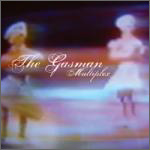 This third full length by The Gasman fits perfectly between his gentle and slow-paced records on Planet Mu and his latest hardcore 12″ on Terminal Dusk. Multiplex displays the usual sampling madness, with bits and pieces of any kind of music you can think of assembled with weird fantasy, forming a bizarre patchwork of drunken melodies. Multiplex features out of tune analogue synths, sometimes underscored with scrambled rhythms like in “Gasm” and “Trampoline,” sometimes coupled with swingy beats as in “BFM;” then it turns to buzzing and clicking noises over clattering breaks as in “Scuth,” and then again “Casserole” steers into an echoing desolate setting. There are other relaxing moments with mainly classical samples, take for example “BGB,” “Thox2” and “Flush,” but there’s always something subtle underneath, you can’t call Multiplex a calm record. Especially when “Tubed” accelerates with firing acid and “Buzzerd” unleashes tinny jungle breaks, until the closing 303 corker “Ultram” leaves you in a raving mood with some straight techno that recalls the sounds of Ceephax.
This third full length by The Gasman fits perfectly between his gentle and slow-paced records on Planet Mu and his latest hardcore 12″ on Terminal Dusk. Multiplex displays the usual sampling madness, with bits and pieces of any kind of music you can think of assembled with weird fantasy, forming a bizarre patchwork of drunken melodies. Multiplex features out of tune analogue synths, sometimes underscored with scrambled rhythms like in “Gasm” and “Trampoline,” sometimes coupled with swingy beats as in “BFM;” then it turns to buzzing and clicking noises over clattering breaks as in “Scuth,” and then again “Casserole” steers into an echoing desolate setting. There are other relaxing moments with mainly classical samples, take for example “BGB,” “Thox2” and “Flush,” but there’s always something subtle underneath, you can’t call Multiplex a calm record. Especially when “Tubed” accelerates with firing acid and “Buzzerd” unleashes tinny jungle breaks, until the closing 303 corker “Ultram” leaves you in a raving mood with some straight techno that recalls the sounds of Ceephax.
::..:::…..:..::….:::::..:::..:::::::……:::…::.:::….::::..:..:::…::…….:::::
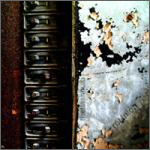 Réunion shows a sharp change in The Flashbulb sound. His previous works are something that can be described as melodic breakcore, with a jazzy IDM influence (dull definition, I know.) while this is totally instrumental, I mean played with physical instruments that don’t include a laptop. So it’s funky (“French Pissing”), bleepy rock (“Little Tuesday,” “Oaklawn UFO”), oriental sounding (“Sangari 7,” “God Is Speaking”), downtempo warm electronica (“Addict Swelling”)… basically it’s not classifiable, the better thing you can do to get an idea of what this album sounds like is to get a copy and listen yourself. This radical change of style reflects Sublight Records’ politics: no matter what kind of music it is, artists in the roster can give the audience anything they want, even if it doesn’t fit with the label’s previous output. This choice will probably surprise all those who were critical with The Flashbulb, saying he was too much inspired by well-known artists, mainly Aphex, Squarepusher or V-Snares. Well, Réunion is a very personal record that probably reflects Benn Jordan’s inner feelings, and that can be hardly traced back to anything you’ve heard before.
Réunion shows a sharp change in The Flashbulb sound. His previous works are something that can be described as melodic breakcore, with a jazzy IDM influence (dull definition, I know.) while this is totally instrumental, I mean played with physical instruments that don’t include a laptop. So it’s funky (“French Pissing”), bleepy rock (“Little Tuesday,” “Oaklawn UFO”), oriental sounding (“Sangari 7,” “God Is Speaking”), downtempo warm electronica (“Addict Swelling”)… basically it’s not classifiable, the better thing you can do to get an idea of what this album sounds like is to get a copy and listen yourself. This radical change of style reflects Sublight Records’ politics: no matter what kind of music it is, artists in the roster can give the audience anything they want, even if it doesn’t fit with the label’s previous output. This choice will probably surprise all those who were critical with The Flashbulb, saying he was too much inspired by well-known artists, mainly Aphex, Squarepusher or V-Snares. Well, Réunion is a very personal record that probably reflects Benn Jordan’s inner feelings, and that can be hardly traced back to anything you’ve heard before.
::..:::…..:..::….:::::..:::..:::::::……:::…::.:::….::::..:..:::…::…….:::::
All releases above are out now on Sublight.
Forthcoming Sublight Releases ::
::..:::…..:..::….:::::..:::..:::::::……:::…::.:::….::::..:..:::…::…….:::::







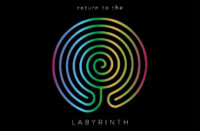






![Pole :: Tempus Remixes (Mute) — [concise]](https://igloomag.com/wp/wp-content/uploads/2025/04/pole-tempus-remixes_feat-75x75.jpg)






![Hasbeen :: Bunker Symphonies II (Clean Error) — [concise]](https://igloomag.com/wp/wp-content/uploads/2025/04/hasbeen-bunker-symphonies-ii_feat-75x75.jpg)
